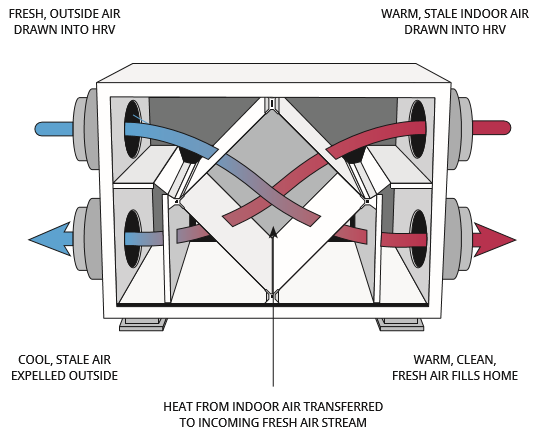What are heat recovery ventilators?
Mechanical ventilation and filtration with an ENERGY STAR® certified heat recovery ventilator (HRV) is an essential means of providing fresh air and maintaining healthy indoor air quality in a modern, well-sealed and insulated energy-efficient home. Older homes, and less efficient new homes, may have higher heating and cooling costs, poor indoor air quality, and higher humidity levels because they have insufficient ventilation systems and leak air and moisture through cracks and holes in the building envelope.
An HRV is a balanced ventilation system that uses a heat exchanger and a series of ducts and fans to blow stale air outside and bring filtered fresh air inside. It reduces heat loss by exchanging heat from outgoing stale air to warm up incoming fresh air. It also exhausts excess humidity to the outdoors.

Did you see a building science or energy efficiency term you did not understand? Check out our glossary.
